Critical Reflection
During the second term I further consolidated my critical reflection by focusing on key themes and challenges:
- What is cultural identity?
- What forges identity?
- How is the essence of resilience embodied and evoked through art?
- Exploration of the history of events /mythology/folklore - “hiraeth”.
- Welsh landscape - sense of place and community.
- Modern day stoicism - recognition, and celebration of.
Having researched various material, outlined in the reference section relevant to the subjects in my initial submission pertaining to the events of the Aberfan disaster (1966), the Miners Strike (1984-85) and the declining steel industry of Port Talbot in the present day I have now begun to focus my practice more through an anthropological lens. There is now a greater concentration on the here and now, and in the celebration of the human spirit. A recent reading of “Here and Now: Letters, 2008 - 2011” by J.M. Coetzee and Paul Auster examines the importance of resilience through experience with Auster capturing this in his assertion: “You can’t put your feet on the ground until you’ve touched the sky”. The letters embrace many subjects and reinforce the necessity for communication which has become more and more of a challenge in modern day society.
There is also the beautifully presented book “Henri Cartier-Bresson: Here and Now” by Clement Cheroux which encapsulates the depth of human life. Henri Cartier-Bresson (1908 -2004). The chapter : "Visual Anthropology", subsection "Man and Machine" is particularly relevant to my own practice. Bresson was particularly interested in capturing the essence of human behaviour and social change and I have sought to embrace this in my projects with "Cross Engineering" and "Corgi" in South Wales. They are at the heart of industry with "Corgi" (based in my home town of Ammanford) having been established in 1892.
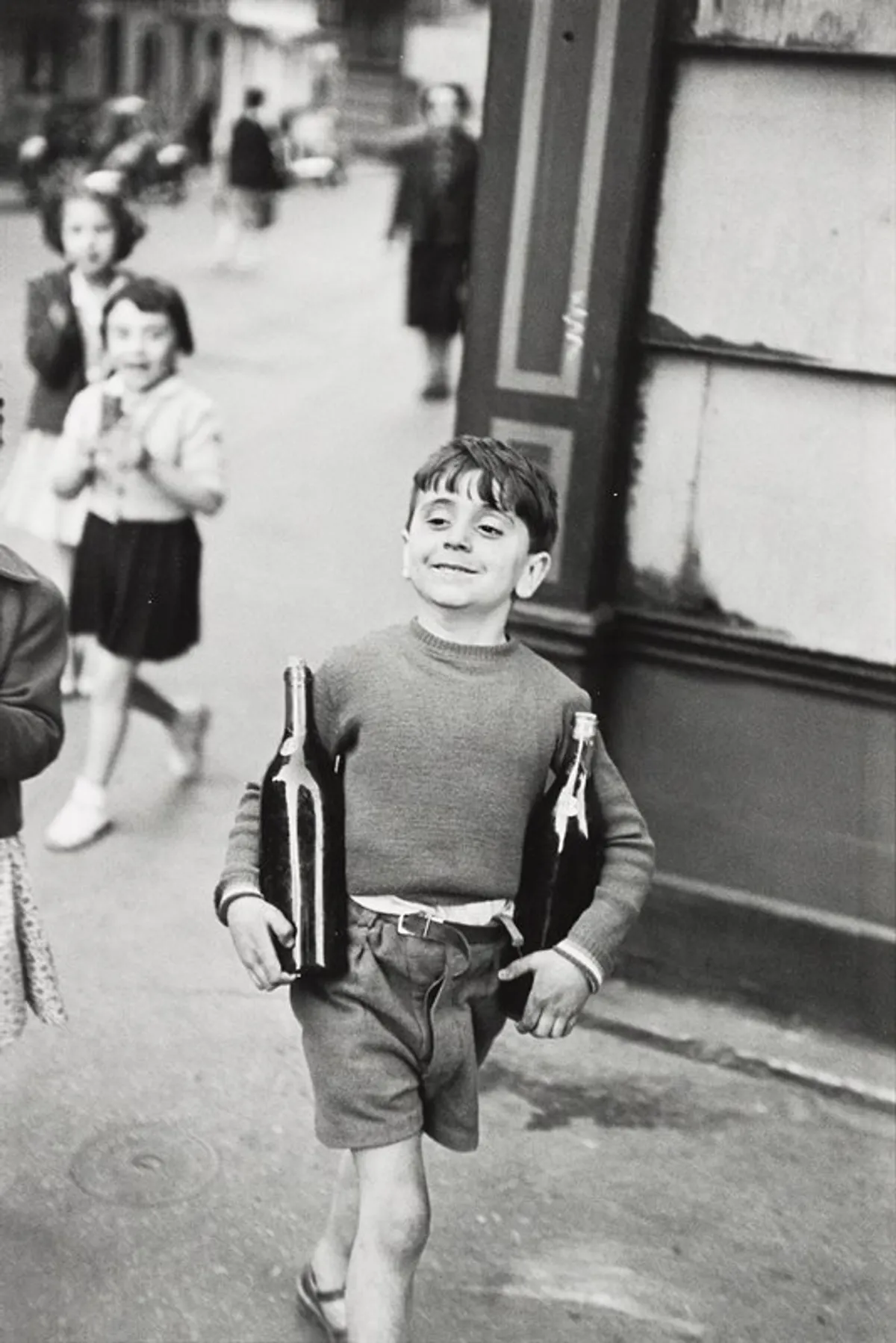
The book was published by Thames and Hudson Ltd, 1st edition, 2014, London.
A reading of “Robert Frank Story Lines” and “London/Wales” reveal the essence of the human spirit. I was particularly struck by the presentation of the images and text in an almost “scrap book” style, and the juxtaposition of photographs from various dates in “Robert Frank Story Lines”. In the chapter “time/gold” by Ian Penman this is explored as “ Throughout his career, he returns to “past” working order to turn it around. Every image can be redeployed elsewhere, otherwise. This keeps the past alive as a NOW-borne angel to watch over each coming retrospectives “you have finally arrived!”.He literally re-presents past work; makes revealing montage of every page. Time becomes as much his medium as film. So that even his own light is returned, turned out, in a new light. A photo from 1951is placed alongside one from 1994 and a whole new register of mood and meaning is engaged. Nothing is ever “definitive” on this road”. The film "Robert Frank Don't Blink" released in 2016 also provides a real insight into his practice and sense of integrity.
It is interesting to note that the writer Jack Kerouac and Frank were friends, with Kerouac penning an introduction to the “The Americans : Robert Frank” as follows: “ That crazy feeling…with the agility, mystery, genius, sadness and strange secrecy of a shadow photographed scenes that have never been seen before on film”. To both Kerouac and Frank to live was to experience life at its fullest and to capture resilience at first hand.
A visit to the exhibitions “ Lives Less Ordinary” at 2, Temple Place and “The 80s’: Photographing Britain” at Tate Britain reinforced my intention to focus on the photographic image in my practice. I was struck by the powerful and evocative nature of works by the following whom I then researched: Corbin Shaw (1998-), Chila Kumara Singh Burman (1957-),Joan Eardley (1921-1963), Izabella Jedrzecjczyk, Jasleen Kaur (1986-),Mark Leckey (1964-), Rene Matic (1997-), Maganthi Patel (1924-2018), Charlie Phillips (1944-), Jo Spence (1934 -1992), Colin Jones (1936 - 2021) and Chris Killip (1946 - 2020).
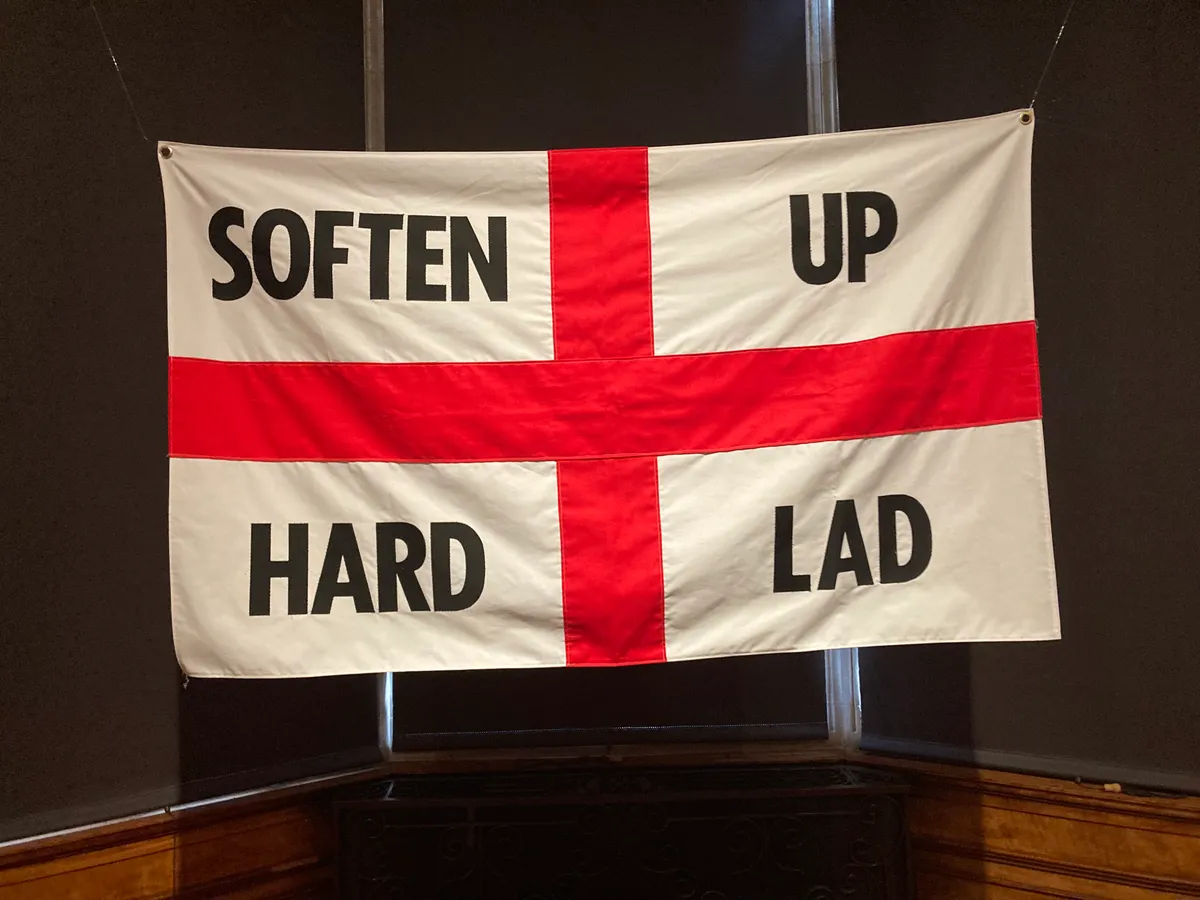
The UAL library and archive section (at LCC) contain a number of books and prints from the Colin Jones collection which I have researched and viewed recently. Two books of particular interest being “Grafters/ColinJones” and “The Black House/Colin Jones”. Jones himself has a very interesting history having been born into a working class family in the East End of London in 1936 he gained a scholarship to the Royal School of Ballet. During his travels with the group he took up photography as a hobby, initially photographing members of the group before taking it up full time with advice from the influential Hungarian photographer Michael Peto, (who had also visited Wales) and whom he had befriended.He had a real affinity and fascination for the “ coal mines and the working class” having visited the North of England and Wales (Ammanford : my home town) and took a series of beautiful images, not only of the mines and ship building areas but also of the ballet dancers whose work ethic and resilience he very much admired. The images and quotes from Jones himself within the text contained within “The Black House” were taken over a four year period (1973-1976) at the Harambee project in the Holloway Road, Islington and provide a powerful insight into the lives of young black people at the time. In one section of the book Jones comments : “ …They talk a lot about home, family, identity. That’s what Brother Herman is trying to do - help these young people to find and know themselves”. The Michael Hoppen gallery in W11, West London houses a great many of these works being very supportive throughout his career. The “Nowness” episode on YouTube “ Colin Jones : Photographs from post War Britain to Mick Jagger” highlight Jones’s sense of humanity in capturing this essence of resilience. The episode was created by Frankie Carradona, a London based artist and visual storyteller. Https://www.nowness.com
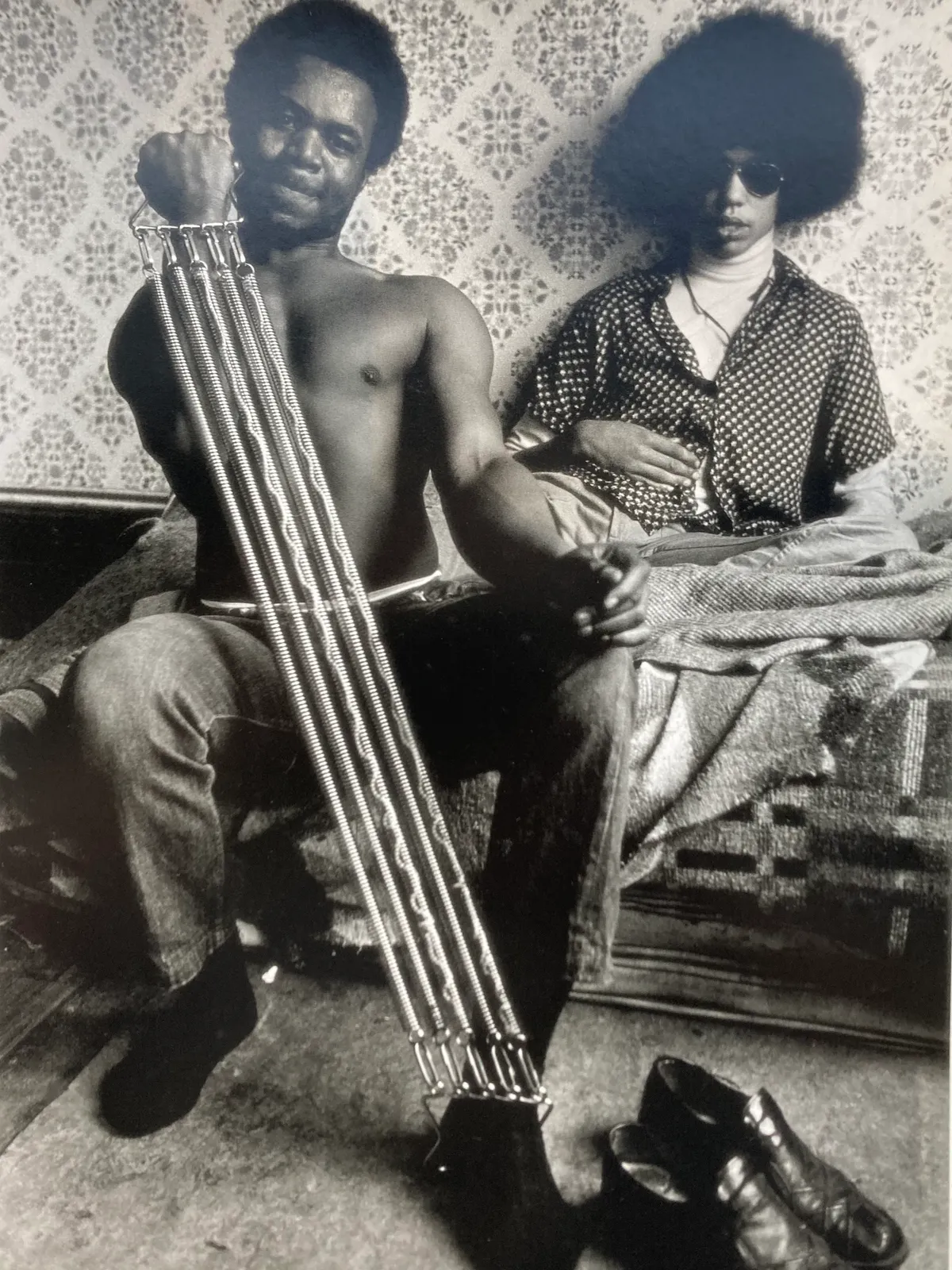

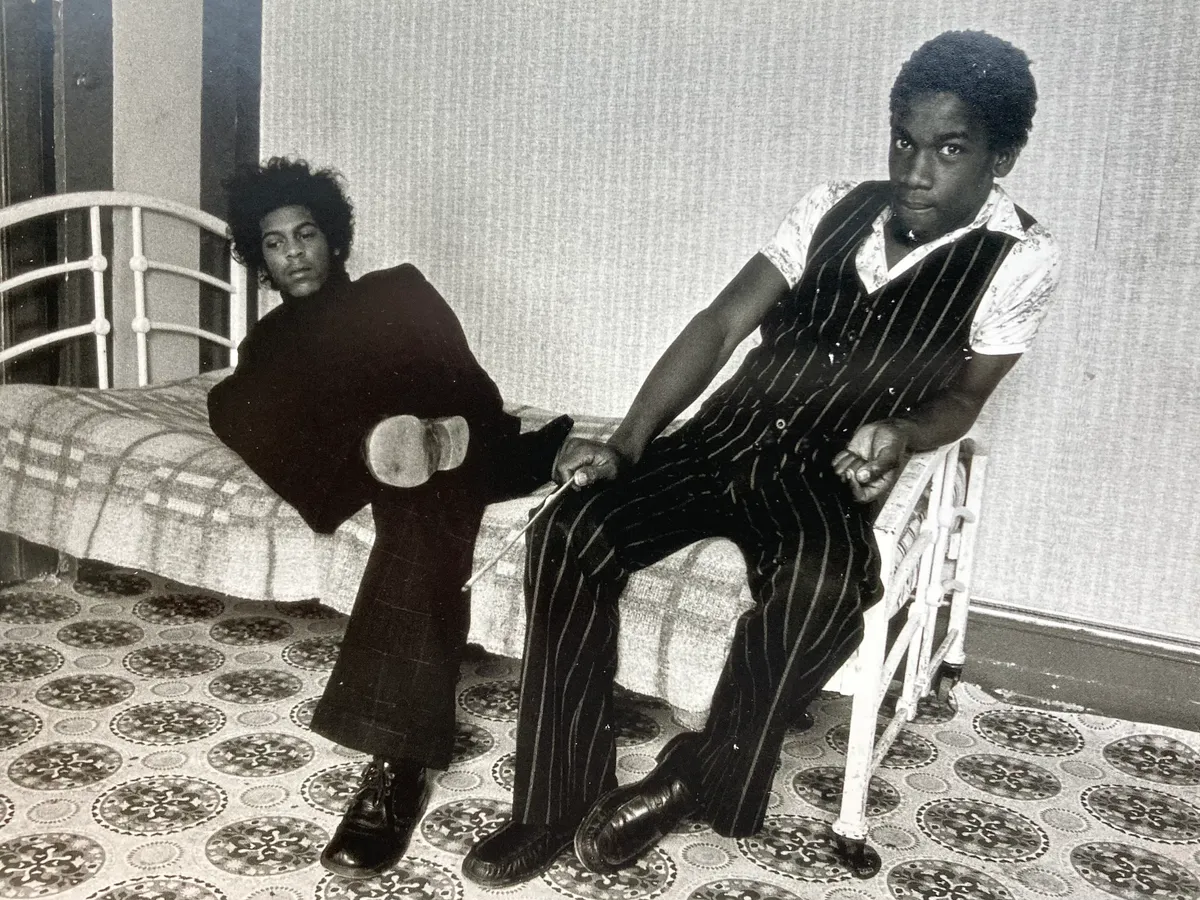
The work of Izabella Jedrzecjczyk in her series known as the “Jungle Portraits” taken over a period of time at a public house in North Shields, Tyneside and part of the “Amber Collective” resonate with my own practice in capturing not only a sense of integrity but also humour and friendship/camaraderie. The book “Striking Women: communities and coal/photographs by Izabella Jedrzecjczk” portrays how active women during the miners strike of 1984-5.
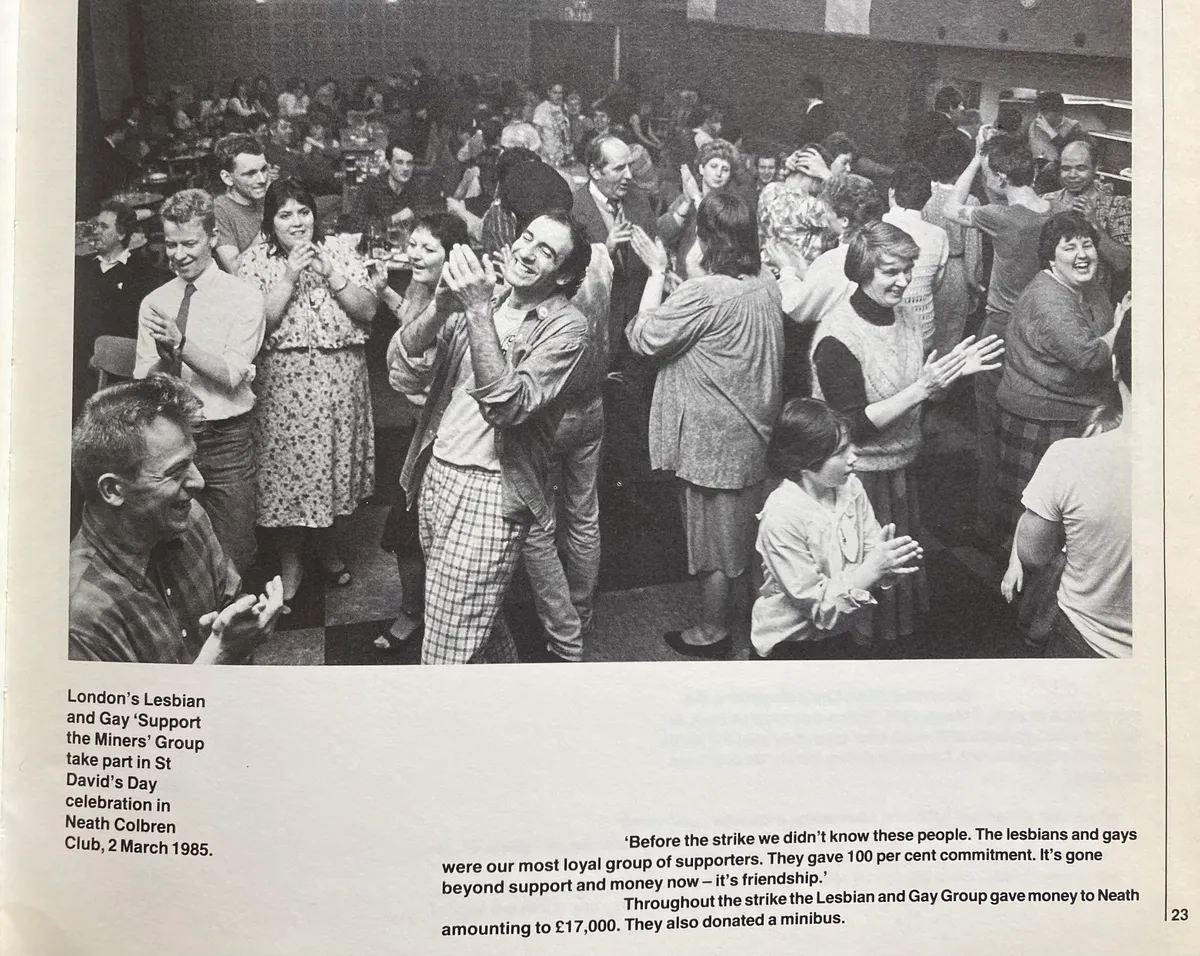
I have greatly enjoyed researching the work of Chris Killip a very influential photographer and whose work bridges the gap between photography and the metaphor. In 1989 he was commissioned by Pirelli, UK to photograph the workforce at their tyre factory in Burton on Trent, and his series “Seacoal” and “The Station” clearly reveal his strong affection for people and in valuing their way of lives. His work in black and white photography he terms as being “an abstraction of reality” and the images resonate as a touchstone with memory and a sense of loss whilst also showing the trust and integrity of the process itself. Https:www.chriskillip.com/in-memory
My own practice will now focus on specific places of work in the Swansea valley as referenced in my Artists statement. This will be over a 6 month period where I will both visit and communicate with the work force. This being an engineering plant, the destabilising effect of the Port Talbot steelworks has become relevant and I want to capture the direct influence upon them not only through photography but in documenting their thoughts about their future and what is important to them in the future. The area itself is steeped in the history of the industrial revolution and I have also established good links with other sources, namely the tin plate, copper and lime firms all of which were major employers in the 20th century and earlier. I have also linked with the archive section of Swansea City and the library section at Pontarddulais who have very kindly permitted me to obtain some photographs from the early tin plate works. I have also contacted the National Museum of Wales regarding their archive section. I have additionally taken a series of photographs (Support section of my practice) of the Lime firms in Cilrychen, Carmarthenshire where my grandfather and I worked. This site is no longer operational but having contacted the architect I was permitted access to what is a building of great historical interest and a Grade 2 listed building.These photographs have then been reproduced and printed from laser cut/wood cut and printed onto various surfaces including metal.The wood/matrix has also been further reworked and has its own identity.
I have also contacted Huw Alden Davies artist and documentary photographer based in West Wales whose books/works “Scaffold to the Moon” and “Prince” I very much admire. These are of a photo book style and focus on a community and a sense of place based around Tumble in the Gwendraeth valley which is well known to me having grown up near to that area myself and where I recall playing rugby as a youth. The books are charged with a sense of reflection and humour, and emphasise the importance of both. Https://www.huwdaviesphotography.com
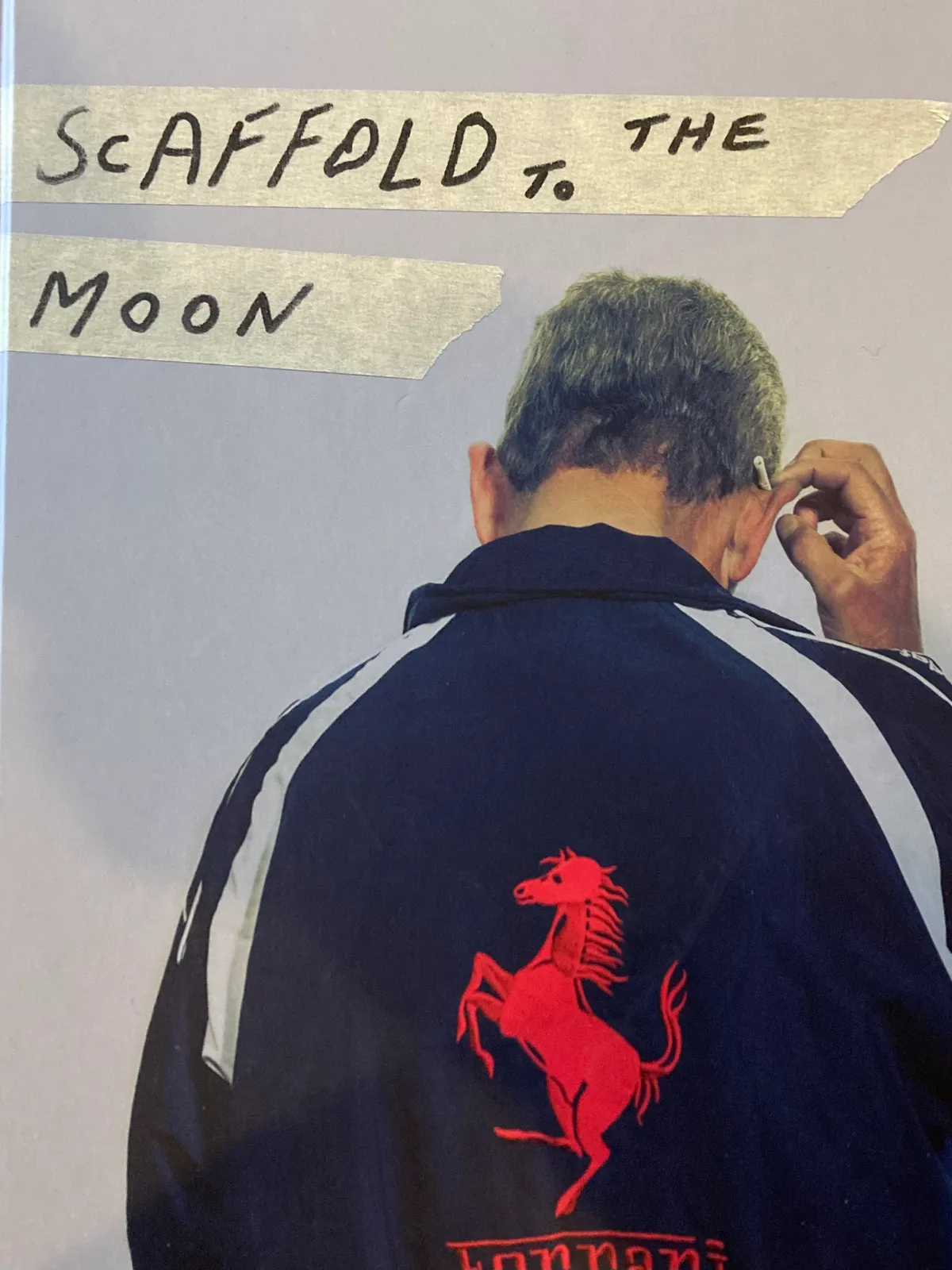
I contacted the FFotogallery in Cardiff in relation to their archive material around the “Valleys Project” and subsequently attended the venue spending a really enjoyable afternoon with them, focusing on the work of : Peter Fraser, Marian Delyth, John Davies, Paul Reas, Mike Berry, Roger Tilley, Francesca Odell and David Bailey. Whilst there I was also privileged to be shown an archive collection relating to newspaper clippings from the Aberfan mining disaster. Viewing the material and reading the journalism really emphasised to me the power of print and its responsibility. One image in particular has stayed with me as a parent.This was on a torn newspaper clipping and charged with pathos. Https://www.ffotogallery.org
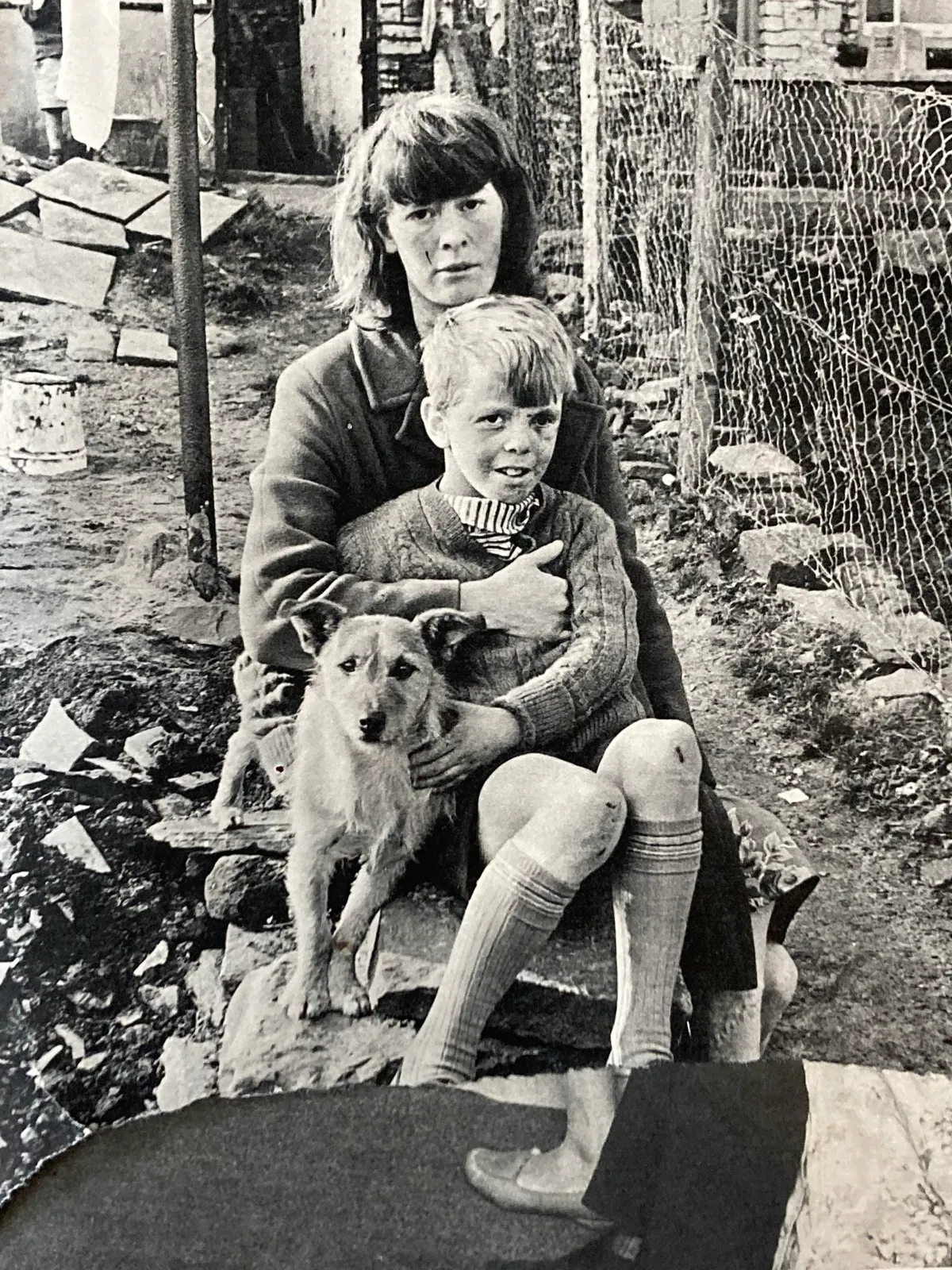
The work of Clementine Schneidermann and Charlotte James in the South Wales valleys has also resonated with me through their workshop delivery in the community and collaboration with the Jukebox Collective based in Cardiff. Https://bleakfabulous.com Https://jukeboxcollective.com
They have linked with various community groups and in the one instance empowered a young group to produce a body of work titled "It's called Ffasiwn" (Welsh for Fashion). This was drawn from their having established workshops in the Abertillery area in 2015 and which developed into a body of work embracing documentary, performance, social commentary,landscape photography and fashion. The key to the work was in the recognition of an interest in fashion which the young people held and in harnessing and developing that in a creative and positive way.Above all it was about the human spirit, hope and aspiration. This led to an exhibition at the work in 2019 (27/03 -25/05/2019) at the Martin Parr Foundation, Paintworks,Bristol. Https://www.martinparrfoundation.org
In terms of a more historical/philosophical research perspective I have reflected upon the following with great interest as being fundamental to the understanding of the make up of Wales and in particular the working class.
Raymond Williams (1921 - 1988), Welsh political thinker and “The Long Revolution” by Raymond Williams, 1992 (Hogarth Press London)
In particular Section 1 : Chapters 3 & 4: Individuals and Societies & Images of Societies.
In Chapter 3 Williams states: “ I cannot agree with everything that Dostoievski’s Zossima says in Brothers Karamzov, but there quite clearly is the central paradox” and references the text as “ They maintain that the world is getting more and more united, more and more bound together in brotherly community, as it overcomes distance and sets thought flying through the air. Alas, pay no faith in such a band of union. The idea of the service of humanity, of brotherly love and the solidarity of mankind, is more and more dying out in the world, and indeed this idea is treated with derision.”
Williams follows on with : "This is not the whole truth but it is an important part of the truth”.
He then continues to refer directly from the novel by including the following : “ Everyone strives to keep his individuality as apart as possible, wishes to secure the greatest possible fulness of life for himself; but meantime all his efforts result not in attaining fulness of life but self destruction, for instead of self realisation he ends by arriving at complete solitude. Everywhere in these men have, in their mockery, ceased to understand that the true society is to be found in social solidarity rather than in isolated individual effort”
Williams continues in Chapter 4 (Images of Societies) “The long revolution which is now at the centre of our history is not for democracy as a political system alone, nor for the equitable distribution of more products, nor the general access to the means of learning and and communication. Such changes, difficult enough in themselves, derive meaning and direction, finally from new conceptions of man and society which many have worked to describe and interpret. Perhaps these conceptions can only be given in experience. The metaphors of creativity and growth seek to enact them, but the pressure, now, must be towards particulars, for here or nowhere they are confirmed.” The importance of lived experience is central to the work of Williams and I also believe this to be very important.
-
Williams receives mention in a book by Mark Durden on the photographer Peter Fraser (1953-) called “Lost for Words” and printed by the FFotogallery, Cardiff in 2010. Fraser being a very prominent photographer, born in Cardiff in 1953 and who also contributed to the Valleys Project initiated in South Wales and covering the period 1984 - 1990. In the book Durden records “ The historical resonances of the pictures had often been strong but they were “products” of the encounter, rather than its initial driving force. In his new work in Wales however, this began to change through a new and unexpected identification with a sense of Welsh history and a connection with a form of cultural experience that Raymond Williams, in his seminal book “The Long Revolution” (1961) identified as "a structure of feelings” Williams was born and grew up up in Wales and his deeply autobiographical way of approaching larger historical questions helped to define a study of culture that was informed by a kind of communal language coming from the past, an intimate “felt sense of the quality of life…in which particular activities combined into a way of thinking and living” (From "Raymond Williams, The Long Revolution, Broadview Press Ltd, Ontario, 2001 pp 63-64),
The book “Peter Fraser” created for his exhibition at Tate St. Ives in 2013 by David Chandler, with a forward by Martin Clark is beautifully presented capturing as Clark puts it, Frasers ability to capture the “poetics of the everyday”. Peter Fraser 2013 Peter Fraser, Tate Publishing, London.
-
I have also researched the sense of place as explored by Anselm Kiefer and the "non place” of Joseph Beuys.
In taking photographs of the seemingly ordinary or banal in my own practice I have sought to elevate their stature and create a duality within. Kiefer’s interest in materiality is also very interesting along with the fact that he fastidiously stores all materials whether used in the final work or not. His constant re appraisal of his work is significantly in future interpretations. In the book which accompanied his exhibition at the Royal Academy in 2014 there is a chapter by Kathleen Soriano entitled “Building, Dwelling and Thinking” in which she refers to his having “discovered the spirituality of concrete”. The main title of the book being “Anselm Kiefer: RA exhibition”
Earlier this year I was very fortunate in attending the Ashmolean museum (Oxford) exhibition of his early work. I was immediately struck by the book which he created in 1974 entitled : “ The face of the German People, coal for 2,000 years”. This is an illustrated book consisting of 184 pages with bound original photographs, emulsion, coal, linseed oil and ferric oxide on wood chip paper, 57 X 45 X 6cm.
Another particularly relevant book production I enjoyed was “Grass will grow over your cities” in 1976. The title references the Book of Isaiah where it represents a prophecy already fulfilled, a civilisation, that of the Philistines, that has already been covered by grass, resettled, covered again , and so on” The ruin becomes a metaphor for re birth and regeneration. Photographs I have taken and researched in the South Wales area, and particularly the disused lime firms at Cilrychen which are similar to his painting “The Golden Bull” 1996 with emulsion and gold leaf canvas (380 X 560 cm). An ongoing project will be to reproduce my photographs (currently in the Support section of the website) of Cilrychen lime firms to a large piece on copper plate with screen etch resist.
The film “Over your cities grass will grow” directed by Sophie Fiennes on Kiefer’s practice is a very insightful watch into Kiefer's practice and beautifully made.
-
Research into Kiefer on this aspect further led me to a study of the book “Pleasure of Ruins” by Rose Macauley with photographs by Roloff Beny Published in 1964 in London by Thames and Hudson.This book is held at the UAL library and has a very tactile production which lends itself very well to the subject matter.
-
I was also fortunate through discussion with Head of Painting Geraint Evans in his providing me with access to his excellent presentation : “Ruin” which had a number of references to South Wales and in particular the copper works at Morfa, Swansea. The piece contained a number of themes being relevant to my own practice of identity and heritage. Geraint provided some valuable research strands which led to my listening to the “Return Journey” by Dylan Thomas originally a radio broadcast in 1947, a beautifully written piece on his return to Swansea and the effects of the devastation caused during air raids on the city in the Second World War. I also watched the presentation of the Tate’s “Ruin Lust” as part of the exhibition at Tate Britain in 2014, along with the work of prominent Welsh artist Ceri Richards (1903 -1971). Reference was also made to the artist George Shaw (1966 -) who I very much admire. I was also introduced to the work of Paul Kelly and then watched the film “What have you done today, Mervyn Day” Directed by Paul Kelly and produced by Andrew Hinton in 2005. Whilst the films themes are multi layered the sense of celebration in a lived experience particularly resonated with me and is something I want to bring to my own practice more.
Anselm Kiefer,2014, Anselm Kiefer, Royal Academy of Arts, published by the RA London. Ashmolean museum https://www.ashmolean.org
-
Research into the photographer Andreas Gursky (1955-). I was particularly interested by the works: “99 cent”, 1999 and ,”Paris, Montparnasse” 1993 where he seems to use the photograph as a metaphor for a cultural attitude. His use of digital manipulation is also something which I have used and will continue to do within my own practice. In terms of presentation I also admire the following exhibition catalogues:
“Andreas Gursky” for the Hayward London, 2018 exhibition produced in 2018 by Steidl Publishing.
“Michael Schmidt & Andreas Gursky Fotografia 6 Villa Massimo” 2019 published by Deutsche Akademie.
-
“The Poetics of Space” by Gaston Bachelard. Penguin Classics. Published by Penguin, New York, 2014. Introduction by Richard Kearney. An interesting book which Kearney introduces us to as “ The Poetics of Space is about hide and seek places where the mind can go on holiday for a while and think about nothing- which means everything. Now more than ever we have need for intimacy, secrets, sites of interiority and contemplation where ewe can practice what Baudelaire-one of Bachelards favourite poets- called the art of “fertile laziness”. And, further in the introduction : “…he insists images are more demandin and rewarding than ideas. They are logos to perception”. Concluding the introduction Kearney adds: “The ultimate task of a phenomenology of imagination is, Bachelard concludes, to capture images at their inception, as they begin anew. In this the phenomenologist and the poet are one, for they both know that imaginative contact with the outer world renews our inner being."
In the book Bachelard himself postulates: “When we dream we are phenomenologists without realising it”.
-
Tracy Templeton : We were vey fortunate in having Tracy Templeton give a lecture to us at Camberwell in the second term. Her use of photography I found to be particularly relevant to my own practice and I further researched her work through her website and hope to make contact with her in the future. Https://tracytempleton.art
“The photographs I begin with act mainly as immediate visual records that are manipulated throughout the photographic printmaking process. During the production I have the opportunity to alter and reduce the photographic imagery, simplifying it and simultaneously broadening its meaning by drawing attention to the essence of the subject”. In my own practice I am very keen to explore the meaning of “essence” and in particular within the context of human resilience and its anthropological state.
-
Visit to Paupers Press, Hoxton, London
We were extremely fortunate in visiting Paupers Press and having a tour from the owner who very kindly showed us various works, Brian Eno’s being a particular favourite of mine as I very much admire his collaborations across various mediums and whose practice is very much borne from relevant contemporary issues.
It was very evident that the owner retained a real passion for printmaking whilst also having a very grounded and realistic approach to the challenges within the arena itself.
-
Presentation by Rachael Causer at UAL, Camberwell
This was certainly a highlight of the term. She led us through her practice with slides relating to exhibitions and took time in explaining how each had come about. The importance of materiality resonated with my own practice, along with the titles of her pieces : “Sump” (2022), “Lick”, “Lodge”, “Thatch" and “Notch" 2023. Her use of salvaged/discarded material particularly the remains of carpets I found very stimulating and which gave an importance/identity to everyday objects and in viewing them in a different way. Her presentation contained reference to the “lumpiness”” and “shonky- ness” of objects, along with the use of negative space. I particularly enjoyed the presentation on her piece “Safe House” (2020) and the photographs shown were very evocative. I believe the titles of pieces to be very important and something I have begun to explore with more and also in the Welsh language. There was also an emphasis on the value of experimentation which I believe to be important to the creative spirit. I enjoyed her use of colours and in the combinations of orange and yellow. I found the work had both an evocative and playful nature and the diction used, encouraged in my researching the artist further and will continue to do so in the future.
I found the practice something I would certainly like to bring to my own. It had a depth, humour and sense of integrity.
-
Visit to the Photographers Gallery, London on the 8th May with a tour/talk re the work of Peter Mitchell and the exhibition "Nothing Lasts Forever".The tour being led by Eleanor Margolies.
-
Artist Glen Ligon (1960-) and in particular the exhibition held at the Fitzwilliam Museum, Cambridge entitled “All over the Place”. The use of various materials along with the stencilling of letters onto works is within my own practice. Book: Glen Ligon, 2021, “Work, work, work,work,work,work”. Hauser and Wirth. I have often used the cutting of stencils in my own work and am an admirer of the artists Willem and Denise Verburg. (Https://pipsqueakwashere.com) whose work confront social issues and in particular relating to nature and conservation.
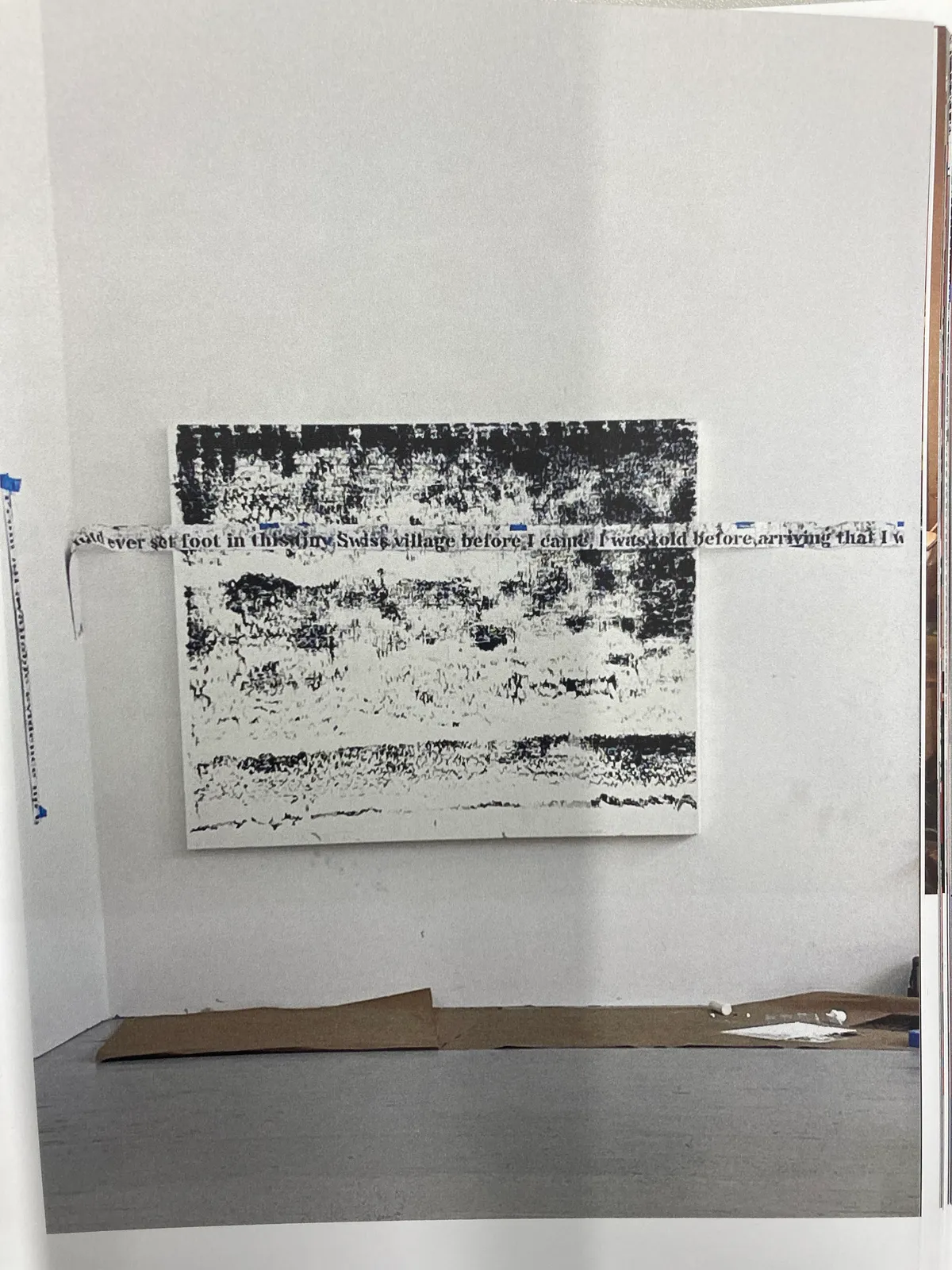
-
Artists Tom Pope and Mathew Bennington (FORMA). Https://Forma.org.uk
-
Artist Thomas Kilpper (1956-). Exhibition “The Ring” South London Gallery, 2000.
-
Artist Henry Moore 1898 - 1986) and in particular the book “Shelter Drawings”.
-
Book “The Valleys” Anthony Stokes with Introduction by Iain Sinclair. Seren Books. 2007 Bridgend, Wales. Photographer Antony Stokes style is aptly described by Ian Sinclair as “…he is attracted by painterly effects; the rusty blush of corrugated sheets bolted together to make a garage or shack, against low lying blue grey mist, rain puddles on grit”. This is something I have incorporated into my own practice in particular with the use of photographic images used through screen print and then printed onto metal/wood or etched onto copper plates.
-
Japanese photo books and in particular the work of Daido Muryami (1938-) and the “Provoke” magazines, 1968, Tokyo. Book : Daido Muryami- A retrospective, Prestel Verlag. 2023 Munich. Book : “Ravens and Lipstick” Lena Fritsch, 2018 Ravens and red lipstick, - Japanese photography since 1945, Thames and Hudson, London.
-
During term two we were also very fortunate in having a presentation by Katherine Jones (1979-) RA along with the opportunity of a one to one which was very productive. Https://katherine-jones.co.uk
-
Visit to the National Archives in Kew in relation to early photographs and documents relevant to the Morfa Copper Works Swansea. Not only was the material informative but the presentation of the dockets/files which contained the material dating back to the 1960s and 70’s provided me with some ideas for the presentation of my own work and in particular a photo book for the recently taken photographs in relation to the engineering works in Pontarddulais, Swansea.
-
Artist and photographer Man Ray (1890 -1976) I researched the “rayograph” process created by Man Ray through an accidental incident when he placed an unexposed sheet into the developer and not wishing to waste the paper produced a series of distorted and refracted images which were both evocative and beautiful in their rather Dadaist nature.
-
William Eggleston (1939 -) an American photographer who influenced contemporary visual culture and was a major influence on Peter Fraser.
-
Paul Graham, British photographer (1956 -) and two works which have relevance to my own practice: “A1 - The Great North Road” 1981 -82"; “Beyond Caring” 1984-85.
-
On the 17th April I attended the Photographers Gallery in London for the Artist Talk: Peter Mitchell which was excellent. Mitchell spoke with real passion and humour about his craft.The colour images he has produced over the last forty years are both highly evocative and powerful in portraying the lives of communities in the North of England. I particularly enjoyed the books : "Nothing Lasts Forever" and "Strangely Familiar".
-
A reading of Jean-Paul Sartre's "Nausea" provided me with an insight into existentialism.
Jean Paul-Sartre "Nausea", 1938 Penguin Books Modern Classics (1963)Random House UK.
-
Bertrand Russell "What I believe" 1925 Routledge Classics, 2004. London.
(Bertrand Russell: Welsh philosopher and scholar 1872-1970)
-
A reading of : Brad Inwood's "Stoicism A very Short Introduction" proved a very interesting insight into philosophical thought on this subject and its modern interpretation. The paragraph pages 8-9 reference the heroic American fighter pilot James Stockade who was shot down over North Vietnam and imprisoned for the duration of the war I found particularly relevant. " Stockdale the fighter pilot saw himself as a man of war. A man could hardly be more different from the French intellectual, Pierre Hadot, a former priest and existentialist teaching at the College de France in the circle of Michael Foucault. Stockdale doesn't think of his Stoicism as a set of spiritual exercises. He writes bluntly of remembering what he read in a book assigned to him in college and finding it useful in the field. He was grateful for being pushed to read it and grateful for the resources he could find in what he remembered, thoughts and attitudes that enabled him to maintain his sanity and integrity under years of torture and isolation. No spiritual mantras here, but a frank assessment of what works psychologically". (Brad Inwood "Stoicism A very short Introduction" 1995, Oxford University Press.
-
John Berger "The Underground Sea" (Miners and the Miners Strike)2024, Canongate Books Ltd, Edinburgh. The book acknowledges the importance as an artist of the necessity of integrating within a community and immersing oneself in the subject matter, and gives the example of artist Josef Herman, a Jewish Polish emigre who fled to Glasgow initially and then Wales in 1944. On arriving in Wales and intending to stay for a matter of weeks he was so taken by the people and the mining community of Ystradgynlais that he remained for 11 years. He portrayed the resilience of the people in a number of evocative paintings and inspiring the current generation to celebrate that community spirit.
Berger was very much a champion of the working class and this was evident in his television series "Before my time".The book contains a number of photographs of working people and communities and comments on their sense of belonging : "Everyone in this village (Creswell) is connected because the mine and its history is as familiar to them as the weather".
The book also references Emile Zolas book "Germinal" first published in 1885 in France showing it as relevant today as when written at the time. In the introduction by Tom Overton and Matthew Harle they reflect this as follows :"...Because the focus on profit survives, so do 19th century mining conditions, where Congolese children dig cobalt so richer people thousands of miles away can continue to live the same lifestyles, only with battery powered cars".
-
Susan Sontag "On Photography" 1978, Penguin Books, Great Britain. This was dealt with during one of our essay sessions in the studio and which I found very stimulating. Sontag's opening of one of the sections being : "To collect photographs is to collect the world" is certainly an interesting one. The discussion encouraged me to read the book in its entirety along with further researching the sequel written by her in 2003 entitled "Regarding the Pain of others". This in turn led me to research the work of others, and in particular Anselm Kiefer, Andreas Gursky, Roland Barthes, Cindy Sherman, Gillian Wearing and Gerhard Richter and their use of photography.
-
Richard Mosse "Incoming" 2017, MACK publishing.
The book included the excellent essay by Giorgio Agamben " Biopolitics and the Rights of Man".
-
Lynn Gumpert "Christian Boltanski" 1994 Flammarion, France.
I have become interested in Boltanski's work and in particular the presentation of his photographic images and installations. This has provided me with various considerations for our summer exhibition where I will be showing a number of images which have been printed onto metal and copper plates.
A reading of the book and the interview conducted by Delphine Renard was also very interesting in reinforcing the language of imagery. On being asked by Renard: "Is recognition a way of seducing the spectator? Boltanski replies: " I try to find images that are sufficiently imprecise to be as widely shared as possible, vague images that spectators can embroider as they see fit. In your little book Les Histories (The stories/histories) I showed a series of images taken from a history book that we all remember from our childhood; under each picture I placed captions that read, for example, "That day the teacher came in with the principal". Each image has to have the power to call to mind an infinite number of phrases of that kind, and each person thinks up their own".
-
Film "Unearthing Elephant"
A film by Eva Sajovic, Rebecca Davies, & Sarah Butler
Voice of the Elephant : Mike Knell
Manager of the Elephant and Castle Shopping Centre (2003-2012)
Presentation by Helen O'Brien
Shown at UAL (Peckham) as part of the Festival for Community Organising on the 1st May.
This was an excellent presentation focusing on the exploration of community action, housing and memory.
There were also a number of workshops being held during the week led by artist/technician Peter Roberts.
This would certainly be something I would be very interested in pursuing pertinent to Port Talbot and the demise of the steel works in that area.
-
We were very fortunate in having the artist Fay Ballard attend the studio in April for a talk along with making herself available for 1-1 sessions which were very productive. I enjoyed the references made to "Memory boxes" in her work and the use of photography. The importance of objects were made and in particular those which were of a personal and evocative nature pertinent to her parents. There was also a sense of re ordering the past which I found interesting and echoed the work of Robert Frank and Gerhard Richter. This has led me further to consider presenting a piece of work as a Notice Board which were commonly used in places of work, schools and colleges. I recently attended the Corgi Factory at Ammanford in South Wales where my mother had first worked when she left school in 1951. There was a beautifully presented Notice Board in the canteen which was a powerful way of reinforcing the sense of unity and camaraderie within the workplace. There were photographs celebrating the past and equally as important, the here and now in parties and staff nights out.
As opposed to a social media post there was a greater degree of permanence and therein importance generated by this display. On the day I visited it was a staff members birthday and I was told that a list was maintained of all such important dates to ensure that peoples sense of worth and value were always celebrated.
During the 1-1 I was also made of the following works which I have researched and listened to: Daniel Miller's "Stuff", Sherry Turkle's edited "Evocative Objects", 2011, MIT Press and the very entertaining podcast series "Everything is alive", https://www.everythingisalive.com
I was also signposted to the work of William Kentridge(1955-) which I have found enthralling.
-
Visit to the Carmarthen School of Art in May and discussion with Head of Photography and artist Huw Alden Davies. I am a great admirer of his work and in particular the published works of "Prince" and "Scaffold to the Moon". Published by I-Pigeon press in Wales in 2018 "Scaffold to the Moon" is a beautifully presented monograph/photobook which explores the lines of photographic and illustrative storytelling. The subject matter is his father, known in the community as "Prince", but transcends the personal to embrace a celebration of life and the hopes and dreams which shape us as individuals. As Huw explained : "When people open the cover of Scaffold to the Moon, I want them to lose themselves for a moment;I want them to laugh, think, reminisce; remember that innocence, hope and optimism they once felt and I want them to remember that special someone, daft as a brush, who reminds us that sometimes its ok to let go. To not go, to be silly, be free, have fun.The world is a big place, a serious one with many big problems.Just remember, if we were standing on the moon, we would quickly be reminded how little we really are" (Taken from the I pigeon website: https://www.i-pigeon.co.uk/prod).
This is very much something which I would like to pursue in the future and which I have begun by forging relationships with two factories in my home town area in South Wales, at Cross Engineering (Pontardulais) and Corgi (Ammanford).
Going forward I will collaborate with agencies in those areas in order to establish workshops in schools and community centres, along with a future photo-book and exhibition from this body of work